Disaster Preparedness & Planning
A natural disaster may be a major adverse event ensuing from natural processes of the Earth; examples embody floods, hurricanes, tornadoes, volcanic eruptions, earthquakes, tsunamis, storms, and alternative earth science processes. A natural disaster will cause loss of life or harm property, and generally leaves some economic harm in its wake, the severity of that depends on the affected population's resilience and on the infrastructure offered. In times, the divide between natural, synthetic and man-accelerated is sort of tough to draw with human selections like design, fire, resource management or maybe climate change doubtless taking part in a job. Associate adverse event won't rise to the extent of a disaster if it happens in a vicinity while not vulnerable population in a very vulnerable space, however, like Asian nation throughout the 2015 earthquake, associate adverse event will have fatal consequences and leave lasting harm, which might take years to repair. Floods are the foremost frequent variety of natural disaster associated occur once an overflow of water submerges land that's typically dry. Floods are typically caused by significant downfall, speedy snowmelt or a storm surge from a tropical cyclone or moving ridge in coastal areas. A flood is associate overflow of water that submerges land that's typically dry within the sense of "flowing water", the word may be applied to the flow of the tide. Floods are of study of the discipline geophysical science and are of serious concern in agriculture, technology and public health. Human changes to the setting typically increase the intensity and frequency of flooding, as an example land use changes like deforestation and removal of wetlands, changes in waterway course like with levees, and bigger environmental problems like temperature change and water level rise. Floods are thought of second solely to wildfires because the commonest natural disaster on Earth. Flooding could occur as associate overflow of water from water bodies, like a stream, lake, or ocean, during which the water overtops or breaks levees, leading to a number of that water escaping its usual boundaries, or it should occur because of associate accumulation of rain on saturated ground in associate region flood. Whereas the scale of a lake or alternative body of water can vary with seasonal changes in precipitation and snow soften, these changes in size are unlikely to be thought of vital unless they flood property or drown sheep. Floods also can occur in streams once the rate of flow exceeds the capability of the river channel, significantly at bends or meanders within the waterway. Floods typically cause harm to homes and businesses if they're within the natural flood plains of rivers. whereas river flood harm will be eliminated by moving faraway from rivers and alternative bodies of water, individuals have historically lived and worked by rivers as a result of the land is sometimes flat and fertile and since rivers offer straightforward travel and access to commerce and trade. A drought is an incident of prolonged shortages within the facility, whether or not atmospherical (below-average precipitation), surface water or spring water. A drought will last for months or years, or could also be declared when as few as fifteen days. It will have a considerable impact on the scheme and agriculture of the affected region and hurt to the native economy. Annual dry seasons within the tropics considerably increase the possibilities of a drought developing and subsequent bush fires. Periods of warmth will considerably worsen drought conditions by fast evaporation of water vapor. Drought may be a revenant feature of the climate in most components of the planet. However, these regular droughts became a lot of extreme and a lot of unpredictable because of temperature change. in truth studies supported dendrochronology, or tree rings qualitative analysis, ensure that drought laid low with warming goes back to 1900. Many plant species, like those within the caryophylloid dicot family (or cacti), have drought tolerance diversifications like reduced leaf space and waxy cuticles to reinforce their ability to tolerate drought. Some others survive dry periods as buried seeds. Semi-permanent drought produces arid biomes like deserts and grasslands. Prolonged droughts have caused mass migrations and humanitarian crisis. Most arid ecosystems have inherently low productivity. The foremost prolonged drought ever within the world in recorded history occurred within the Atacama Desert in Chile (400 Years). Drought have an effect on food production and human society, in order that they are thought of a disaster, of natural, supernatural or human cause (which itself may well be supernatural causes, condemnation, sin, ...). it's among the earliest documented climatical events, gift within the Epic of male monarch and tied to the Biblical story of Joseph's arrival in and also the later Exodus from Ancient Egypt. Barbarian migrations in nine,500 B.C. Chile are coupled to the development, as has the exodus of early humans out of continent and into the remainder of the planet around one hundred thirty five,000 years ago. Rituals exist to stop or avert drought, production may go from dances to scapegoating to human sacrifices. Nowadays, those ancient practices are for the foremost half relegated to traditional knowledge and replaced by a lot of rational water management. In meteorology, a cyclone may be a massive scale atmosphere that rotates around a powerful center of low gas pressure. Cyclones are characterised by inward coiled winds that rotate a few zone of air mass. The biggest unaggressive systems are polar vortices and extratropical cyclones of the biggest scale (the synoptic scale). Warm-core cyclones like tropical cyclones and climatic zone cyclones conjointly lie among the synoptic scale. Mesocyclones, tornadoes, and mud devils lie among smaller mesoscale. Higher level cyclones will exist while not the presence of a surface low, and may pinch faraway from the bottom of the tropical higher tropospheric trough throughout the summer months within the hemisphere. Cyclones have conjointly been seen on extraterrestrial planets, like Mars, Jupiter, and Neptune. Cyclogenesis is that the method of cyclone formation and intensification. Extratropical cyclones begin as waves in massive regions of increased mid-latitude temperature contrasts referred to as baroclinic zones. These zones contract and type weather fronts because the cyclonic circulation closes and intensifies. Later in their life cycle, extratropical cyclones jam as cold air plenty undercut the hotter air and become cold core systems. A cyclone's track is radio-controlled over the course of its two to six day life cycle by the steering flow of the climatic zone airstream. Weather fronts mark the boundary between 2 plenty of air of various temperature, humidity, and densities, and are related to the foremost distinguished meteorologic phenomena. Sturdy cold fronts generally feature slim bands of thunderstorms and severe weather, and will sometimes be preceded by squall lines or dry lines. Such fronts type west of the circulation center move from west to east; heat fronts type east of the cyclone center and are usually preceded by stratiform precipitation and fog. Heat fronts move poleward before the cyclone path. Occluded fronts type late within the cyclone life cycle close to the middle of the cyclone and sometimes wrap round the storm center. Tropical cyclogenesis describes the method of development of tropical cyclones. Tropical cyclones type because of heat of transformation driven by vital electric storm activity, and ar heat core. Cyclones will transition between extratropical, climatic zone, and tropical phases. Mesocyclones type as heat core cyclones over land, and may result in tornado formation. Waterspouts also can type from mesocyclones, however a lot of typically develop from environments of high instability and low vertical wind shear. Within the Atlantic and also the northeastern Pacific oceans, a tropical cyclone is usually remarked as a cyclone (from the name of the traditional Central yankee supernatural being of wind, Huracan), within the Indian and Pacific Ocean oceans it's referred to as a cyclone, and within the northwestern Pacific it's referred to as a storm. The expansion of instability within the vortices isn't universal. as an example, the size, intensity, moist-convection, surface evaporation, the worth of potential temperature at every potential height will have an effect on the nonlinear evolution of a vortex. Volcanoes will cause widespread destruction and resulting disaster in many ways in which. One hazard is that the eruption itself, with the force of the explosion and falling rocks ready to cause damage. volcanic rock may additionally be discharged throughout the eruption of a volcano; because it leaves the volcano, it will destroy buildings, plants and animals thanks to its extreme heat. Additionally, volcanic ash might type a cloud (generally once cooling) and settle thickly in near locations. Once mixed with water, this forms a concrete-like material. In adequate quantities, ash might cause roofs to collapse beneath its weight. Even tiny quantities can damage humans if indrawn — it's the consistency of ground glass and thus causes laceration to the throat and lungs. Volcanic ash also can cause abrasion harm to moving machinery like engines. The most killer of humans within the immediate surroundings of a eruption is pyroclastic flows, consisting of a cloud of hot ash that builds up within the air on top of the volcano and rushes down the slopes once the eruption not supports the lifting of the gases. It's believed that metropolis was destroyed by a pyroclastic flow. A avalanche may be a volcanic mudflow or landslide. The 1953 Tangiwai disaster was caused by a avalanche, as was the 1985 Armero tragedy within which the city of Armero was buried associate degreed an calculable twenty three,000 individuals were killed.[citation needed] Volcanoes rated at eight (the highest level) on the Volcanic Explosivity Index area unit referred to as supervolcanoes. In line with the Toba catastrophe theory, 75,000 to 80,000 years agone, a supervolcanic eruption at what's currently Lake Toba in Sumatra reduced the human population to ten,000 or perhaps one,000 breeding pairs, making a bottleneck in human evolution, and killed three-quarters of all vegetation within the hemisphere. However, there's extended dialogue relating to the truthfulness of this theory. the most danger from a supervolcano is that the vast cloud of ash, that includes a black world result on climate and temperature for several years. A volcano may be a rupture within the crust of a planetary-mass object, like Earth, that enables hot volcanic rock, volcanic ash, and gases to flee from a rock chamber below the surface. On Earth, volcanoes area unit most frequently found wherever tectonic plates area unit radiating or convergence, and most area unit found underwater. as an example, a mid-oceanic ridge, like the mid-Atlantic Ridge, has volcanoes caused by divergent tectonic plates whereas the Pacific Ring of fireside has volcanoes caused by convergent tectonic plates. Volcanoes also can type wherever there's stretching and dilution of the crust's plates, like within the geographical area Rift and therefore the Wells Gray-Clearwater volcanic field and Rio Grande Rift in North America. Geological phenomenon far from plate boundaries has been postulated to arise from upwelling diapirs from the core–mantle boundary, 3,000 kilometers (1,900 mi) deep within the Earth. This ends up in hotspot geological phenomenon, of that the Hawaiian hotspot is associate degree example. Volcanoes area unit sometimes not created wherever 2 tectonic plates slide past each other. An earthquake is that the results of a explosive unharness of energy within the layer that makes seismal waves. At the Earth's surface, earthquakes manifest themselves by vibration, shaking, and generally displacement of the bottom. Earthquakes area unit caused by slippage at intervals earth science faults. The underground purpose of origin of the earthquake is termed the seismal focus. The purpose directly on top of the main focus on the surface is termed the geographical point. Earthquakes by themselves seldom kill individuals or life — it's sometimes the secondary events that they trigger, like building collapse, fires, tsunamis and volcanic eruptions, that cause death. several of those will presumably be avoided by higher construction, safety systems, early warning and coming up with. An earthquake (also referred to as a quake, tremor or temblor) is that the shaking of the surface of the planet ensuing from a explosive unharness of energy within the Earth's geosphere that makes seismal waves. Earthquakes will point size from people who area unit thus weak that they can't be felt to those violent enough to propel objects and other people into the air, and make destruction across entire cities. The seismicity, or seismal activity, of a district is that the frequency, type, and size of earthquakes skilled over a amount of your time. The word tremor is additionally used for non-earthquake seismal rumbling. At the Earth's surface, earthquakes manifest themselves by shaking and displacing or disrupting the bottom. Once the geographical point of an oversized earthquake is found offshore, the Davy Jones is also displaced sufficiently to cause a moving ridge. Earthquakes also can trigger landslides and infrequently, volcanic activity. In its most general sense, the word earthquake is employed to explain any seismal event—whether natural or caused by humans—that generates seismal waves. Earthquakes area unit caused largely by rupture of earth science faults however additionally by alternative events like volcanic activity, landslides, mine blasts, and nuclear tests. Associate degree earthquake's purpose of initial rupture is termed its hypocenter or focus. The earthquake is that the point at ground level directly on top of the hypocenter. A moving ridge may be a series of waves during a water body caused by the displacement of an oversized volume of water, typically in associate degree ocean or an oversized lake. Earthquakes, volcanic eruptions and alternative underwater explosions (including detonations, landslides, ice mass calvings, meteor impacts and alternative disturbances) on top of or below water all have the potential to come up with a moving ridge. Not like traditional ocean waves, that area unit generated by wind, or tides, that area unit generated by the gravitative pull of the Moon and therefore the Sun, a moving ridge is generated by the displacement of water. Tsunami waves don't jibe traditional submarine currents or ocean waves as a result of their wavelength is way longer.Instead of showing as a breaking wave, a moving ridge might instead at first jibe a quickly tide. For this reason, it's typically spoken as a tsunami, though this usage isn't favoured by the scientific community as a result of it'd offer the confusion of a causative relationship between tides and tsunamis. Tsunamis typically carries with it a series of waves, with periods starting from minutes to hours, inward during a questionable "wave train". Wave heights of tens of metres may be generated by giant events. though the impact of tsunamis is restricted to coastal areas, their harmful power may be monumental, and that they will have an effect on entire ocean basins. The 2004 ocean moving ridge was among the deadliest natural disasters in human history, with a minimum of 230,000 individuals killed or missing in fourteen countries bordering the ocean. The Ancient Greek scholar historian instructed in his fifth century B.C. History of the war that tsunamis were associated with submarine earthquakes, however the understanding of tsunamis remained slim till the twentieth century and far remains unknown. Major areas of current analysis embrace determinative why some giant earthquakes don't generate moving ridges whereas alternative smaller ones do; accurately prediction the passage of tsunamis across the oceans; and prediction however tsunami waves move with shorelines. The term landslide or less ofttimes, landslip, refers to many sorts of mass wasting that will embrace a large vary of ground movements, like rockfalls, deep-rooted slope failures, mudflows, and scrap flows. However, important narrower definitions limit landslides to slumps and change of location slides in rock and regolith, not involving fluidisation. This excludes falls, topples, lateral spreads, and mass flows from the definition. Landslides occur during a form of environments, characterised by either steep or mild slope gradients, from mountain ranges to coastal cliffs or perhaps underwater, within which case they're referred to as submarine landslides. Gravity is that the primary drive for a landslide to occur, however there area unit alternative factors moving slope stability that turn out specific conditions that build a slope liable to failure. In several cases, the landslide is triggered by a selected event (such as a significant rain, associate degree earthquake, a slope move build a road, and plenty of others), though this can be not continually recognizable. Landslides occur once the slope (or some of it) undergoes some processes that modification its condition from stable to unstable. This can be primarily thanks to a decrease within the shear strength of the slope material, to a rise within the shear stress borne by the fabric, or to a mix of the 2. A modification within the stability of a slope may be caused by variety of things, acting along or alone. Natural causes of landslides include: saturation by rain water infiltration, snow melting, or glaciers melting; rising of groundwater or increase of pore water pressure (e.g. because of formation recharge in rainy seasons, or by rain water infiltration); increase of hydrostatic pressure in cracks and fractures; loss or absence of vertical vegetative structure, soil nutrients, and soil structure (e.g. when a conflagration – a fireplace in forests lasting for 3–4 days); erosion of the toe of a slope by rivers or ocean waves; physical and chemical weathering (e.g. by perennial freeze and thawing, heating and cooling, salt unseaworthy within the groundwater or mineral dissolution); ground shaking caused by earthquakes, which might destabilize the slope directly (e.g., by causation soil liquefaction) or weaken the fabric and cause cracks which will eventually turn out a landslide. Coastal hazards square measure physical phenomena that expose a coastal space to risk of property injury, loss of life and environmental degradation. Rapid-onset hazards last over periods of minutes to many days and examples embody major cyclones amid high winds, waves and surges or tsunamis created by submarine earthquakes and landslides. Slow-onset hazards develop incrementally over longer time periods and examples embody erosion and gradual inundation. Since early civilization, coastal areas are enticing sinking grounds for human population as they provided exuberant marine resources, fertile agricultural land and prospects for trade and transport. This has semiconductor diode to high population densities and high levels of development in several coastal areas and this trend is continuous into the twenty first century. At present, about 1.2 billion individuals board coastal areas globally, and this range is foreseen to extend to one.8–5.2 billion by the pair of080s because of a mixture of growth and coastal migration. Together with this increase follows major investments in infrastructure and also the build setting. The characteristics of coastal environments, however, cause some nice challenges to human habitation. Coastlines square measure extremely dynamic natural systems that act with terrestrial, marine and part processes and endure continuous modification in response to those processes. Over the years, human society has usually did not acknowledge the hazards associated with these dynamics and this has semiconductor diode to major disasters and social group disruption to numerous degrees. Even today, coastal development is commonly happening with very little relevance the hazards gift in these environments, though global climate change is probably going to extend the overall hazard levels. Social group activities in coastal areas may also cause a hazard to the natural balance of coastal systems, thereby disrupting e.g. sensitive ecosystems and afterward human support. Coastal hazard management has become associate degree progressively necessary side of coastal coming up with so as to enhance the resilience of society to coastal hazards. Attainable management choices embody onerous engineering structures, soft protection measures, numerous accommodation approaches similarly as a managed retreat from the outline. For addressing coastal hazards, it's conjointly necessary to possess early warning systems and emergency management plans in situ to be ready to address fulminant and potential calamitous hazards i.e. major flooding events. Events because the cyclone Katrina moving the southern U.S.A. in 2005 and also the cyclone Nargis moving Asian nation in 2008 provides clear samples of the importance of timely coastal hazard management. Soil erosion is that the displacement of the higher layer of soil; it's a kind of soil degradation. This action is caused by the dynamic activity of erosive agents, that is, water, ice (glaciers), snow, air (wind), plants, animals, and humans. In accordance with these agents, erosion is usually divided into water erosion, glacial erosion, snow erosion, wind (aeolean) erosion, zoogenic erosion and phylogenesis erosion. Eating away is also a slow method that continues comparatively overlooked, or it's going to occur at associate degree alarming rate inflicting a heavy loss of soil. The loss of soil from farmland is also mirrored in reduced crop production potential, lower surface water quality and broken drain networks. Soil erosion might conjointly cause sinkholes. Human activities have accrued by 10–50 times the speed at that erosion is going on globally. Excessive (or accelerated) erosion causes each "on-site" and "off-site" issues. on-the-scene impacts embody decreases in agricultural productivity and (on natural landscapes) ecological collapse, each as a result of loss of the nutrient-rich higher soil layers. In some cases, the ultimate effect is geological process. off-site effects embody geological phenomenon of waterways and eutrophication of water bodies, similarly as sediment-related injury to roads and homes. Water and wind erosion square measure the 2 primary causes of land degradation; combined, they're liable for concerning eighty four of the worldwide extent of degraded land, creating excessive erosion one among the foremost vital environmental issues worldwide. Intensive agriculture, deforestation, roads, phylogenesis global climate change and concrete sprawl square measure amongst the foremost vital human activities in relevance their impact on stimulating erosion but, there square measure several hindrance and redress practices which will curtail or limit erosion of vulnerable soils. Rainfall, and also the surface runoff which can result from downfall, produces four main kinds of soil erosion: splash erosion, sheet erosion, rill erosion, and valley erosion. Splash erosion is mostly seen because the initial and least severe stage within the eating away method, that is followed by sheet erosion, then rill erosion and at last valley erosion (the most severe of the four). In splash erosion, the impact of a falling driblet creates atiny low crater within the soil, ejecting soil particles. The space these soil particles travel will be the maximum amount as zero.6 m (two feet) vertically and one.5 m (five feet) horizontally on level ground. If the soil is saturated, or if the downfall rate is larger than the speed at that water will infiltrate into the soil, surface runoff happens. If the runoff has ample flow energy, it'll transport untangled soil particles (sediment) down the slope. Sheet erosion is that the transport of untangled soil particles by land flow. A wildfire, wildland fireplace or rural fireplace is an unpredictable, unwanted, uncontrolled fireplace in a locality of flamable vegetation beginning in rural areas and concrete areas. Betting on the kind of vegetation gift, a conflagration may also be classified additional specifically as a fire, brush fire, bushfire (in Australia), desert fireplace, grass fire, hill fire, peat fire, grassland fireplace, vegetation fireplace, or veldt fireplace. Several organizations take into account conflagration to mean an unpredictable and unwanted fireplace, whereas wildland-fire may be a broader term that features prescribed fireplace similarly as wildland fireplace use (WFU; these also are referred to as monitored response fires). Fossil charcoal indicates that wildfires began before long when the looks of terrestrial plants 420 million years past. The incidence of wildfires throughout the history of terrestrial life invitations conjecture that fireplace should have had pronounced biological process effects on most ecosystems' flora and fauna. Earth is associate degree in and of itself ignitible planet as a result of its cowl of carbon-rich vegetation, seasonally dry climates, part O, and widespread lightning and volcanic ignitions. Wildfires will be characterised in terms of the reason for ignition, their physical properties, the combustible gift, and also the impact of weather on the hearth. Wildfires will cause injury to property and human life, though present wildfires could have useful effects on native vegetation, animals, and ecosystems that have evolved with fireplace. Conflagration behavior and severity result from a mixture of things like offered fuels, physical setting, and weather. Analyses of historical earth science information and national fireplace records in western North America show the grandness of climate in driving massive regional fires via wet periods that make substantial fuels, or drought and warming that stretch contributory fireplace weather. High-severity conflagration creates advanced early several forest surroundings (also referred to as "snag forest habitat"), which regularly has higher species richness and variety than turn previous forest. Several plant species rely upon the consequences of fireside for growth and replica. Wildfires in ecosystems wherever conflagration is rare or wherever non-native vegetation has encroached could have powerfully negative ecological effects. Wildfires square measure among the foremost common styles of natural disaster in some regions, together with geographic region, California, and Australia. Areas with Mediterranean climates or within the taiga community square measure notably inclined.
Unit 2
Disaster
Q1. What do you mean by natural disaster and explain flood?
A1. Natural Disaster:
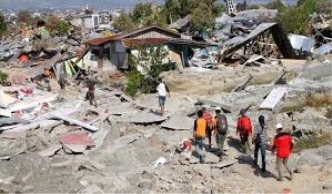
Natural Disaster
Floods:
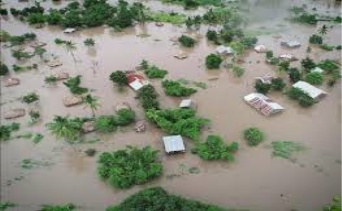
Flood
Q2. Explain what do you mean by draught?
A2. Draught:
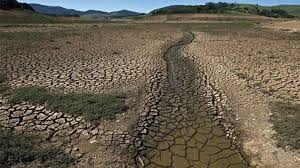
Draught
Q3. Explain cyclones in brief with diagram.
A3. Cyclones:
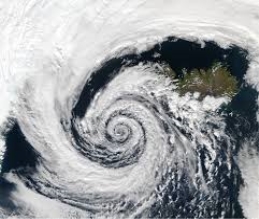
Cyclones
Q4. Explain in brief volcanoes with diagram.
A4. Volcanoes:
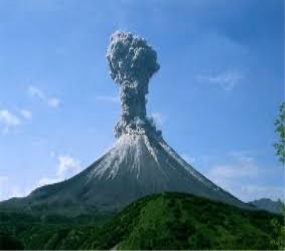
Volcanoes
Q5. What do you mean by earthquake?
A5. Earthquakes:
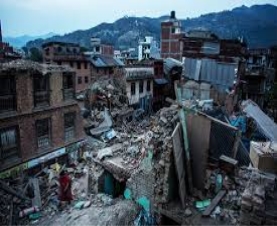
Earthquakes
Q6. Explain tsunami in brief.
A6. Tsunami:
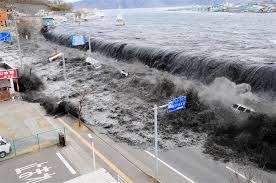
Tsunami
Q7. Explain landslide with diagram.
A7. Landslides:
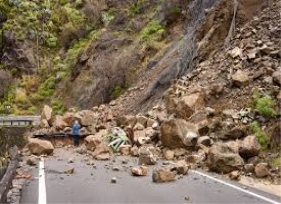
Landslides
Q8. What do you mean by coastal erosion? Explain with diagram.
A8.Coastal Erosion:
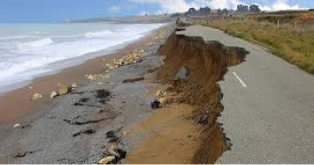
Coastal Erosion
Q9. What do you mean by soil erosion ?
A9. Soil Erosion:
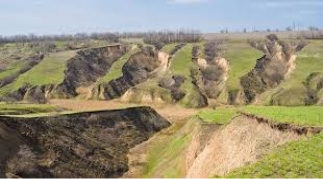
Soil Erosion
Q10. Explain forest fire.
A10. Forest Fire:

Forest Fire
0 matching results found